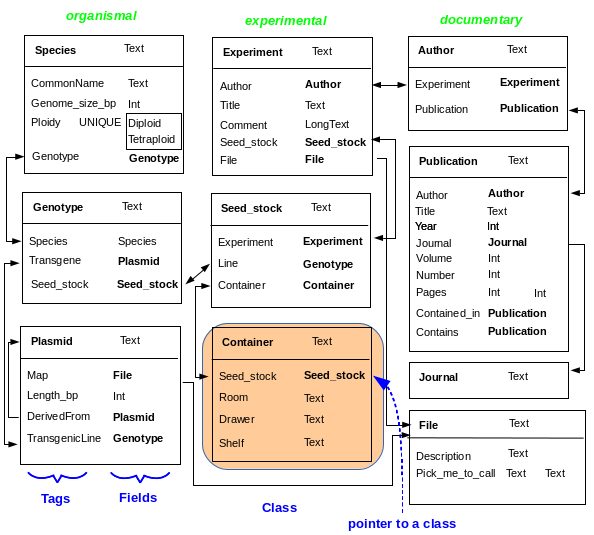This schema describes the various transgenic plant lines in a laboratory collection. Each transgenic line is denoted by a Genotype object, which tells which Species the plant belongs to, which Plasmid was used to create the transgenic line, and which Seed_stocks are available for that line.
Each Experiment object documents the Seed_stocks produced, as well as the person (Author) who did the work. Publications for each Author can also be included.
IMPORTANT: Each class in the schema is an abstraction. It is NOT an example of an object. Thus, it would be incorrect to for the schema to show the Seed_stock class with specific values in each field:
Seed_stock AM312.Westar43
Experiment AM312
Line Westar
Container Box12
The above is an object, not a class.
